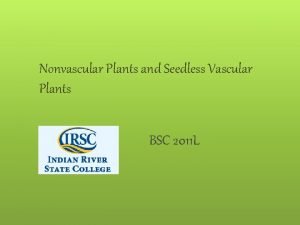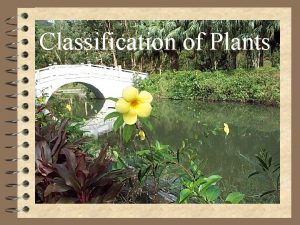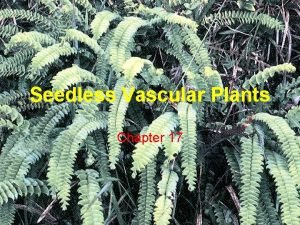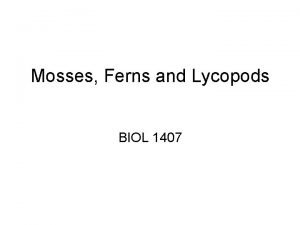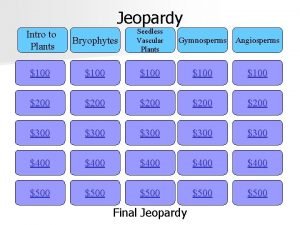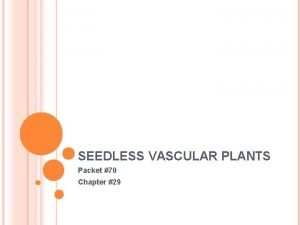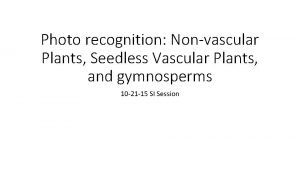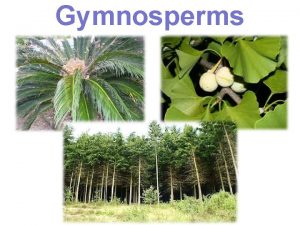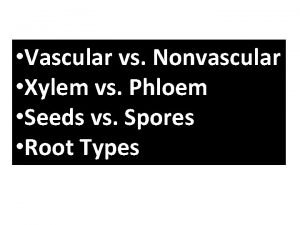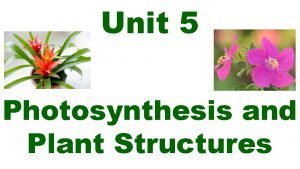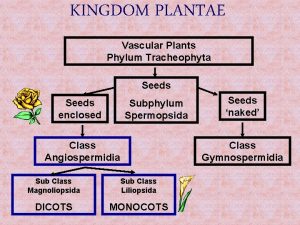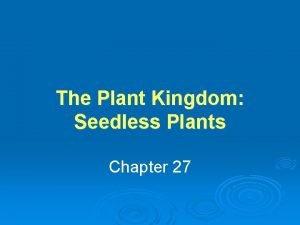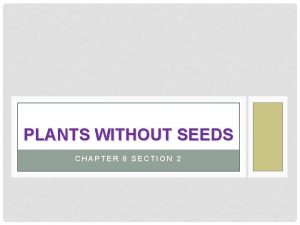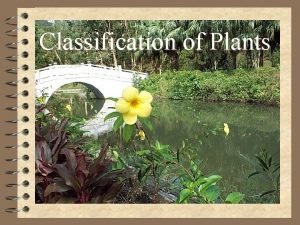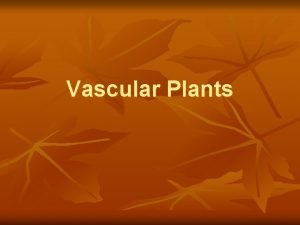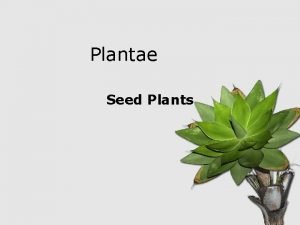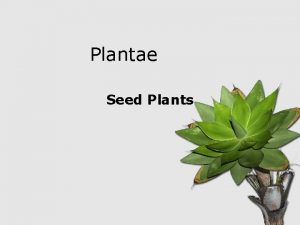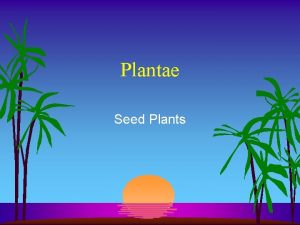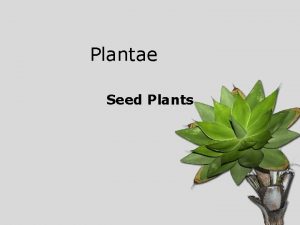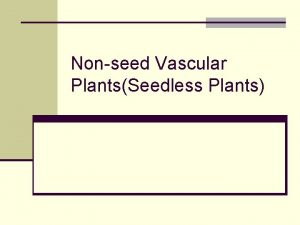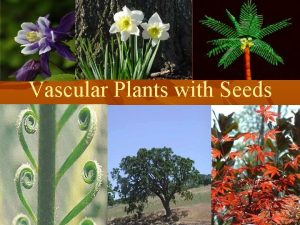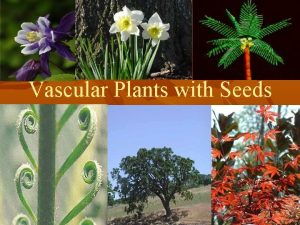NonFlowering Vascular Plants Chapter 8 in Judd et
















- Slides: 16

Non-Flowering Vascular Plants Chapter 8 in Judd et al. Focus on family characters and terminology for now, evolutionary relationships later. Look at pictures on the cd that came with book

Lycophytes • 2 Families: – Lycopodiaceae (Clubmosses), Lycopodium – Selaginellaceae (Spikemosses), Selaginella • Similar characteristics: – Both are vascular plants, not true mosses – Overlapping scale-like leaves – Spores produced in sporangia that are • in terminal strobili in Lycopodium (text fig 8. 2) • between the leaves in Selaginella (text fig. 8. 3)

Lycopodium digitatum (=L. flabelliforme) Lycopodium annotinum Lycopodium dendroideum Selaginella arenicola

Small Families Related to Ferns • Psilotaceae – Whisk ferns • Equisetaceae – Horsetails • Ophioglossaceae – Eusporangiate ferns • Look at some pictures but you are not responsible for knowing anything about them at this time.

Psilotum nudum Equisetum hyemale Ophioglossum vulgatum

True Ferns (Leptosporangiate ferns) • Mostly in family Polypodiaceae (7500 spp. ) – Also Osmundaceae, Marsileaceae, Cyatheaceae, but don’t worry about the differences. • Often pinnately compound leaves, but actually a wide variety of leaf shapes. • Spores produced in clusters called sori (singular = sorus). • Sori are very important to identification.

Sori


Fern sori • Often found on under-surface of leaves. • May be covered by flap of tissue called the indusium. • Shape of sorus and indusium v. important. • Sori may be concentrated on separate fertile fronds or fertile leaflets.

Sori with indusia

Sori on separate fronds Osmunda cinnamomea Botrichium virginianum

Gymnosperms • Seed plants without flowers or fruits. • Seeds are usually in a cone-like structure. • Four orders, but only the last one is important in our local flora – Cycadales, the cycads – Ginkgoales, the ginkgo tree, Ginkgo biloba – Gnetales, the gnetophytes – Coniferales, the conifers

Ginkgo biloba a cycad a gnetophyte

Important families of Coniferales • Pinaceae – pine, fir, spruce, hemlock • Cupressaceae – redwood, baldcypress, juniper

Juniperus virginiana Pinus clausa Taxodium distichum

Characters in the Coniferales • • • Cone size, shape, position Needles individual or in bundles (fascicles) How many needles per fascicle Size, shape, twisting of needles Evergreen or deciduous
 Characteristic of non flowering plants
Characteristic of non flowering plants Non vascular plant reproduction
Non vascular plant reproduction Nonvascular plant
Nonvascular plant Nonvascular plants definition
Nonvascular plants definition Vascular and non vascular difference
Vascular and non vascular difference Phyla of seedless vascular plants
Phyla of seedless vascular plants Vascular vs nonvascular plants
Vascular vs nonvascular plants Angiosperms _____.
Angiosperms _____. Seedless vascular plants
Seedless vascular plants Phyla of seedless vascular plants
Phyla of seedless vascular plants Seedless vascular plants
Seedless vascular plants Seed producing vascular plants
Seed producing vascular plants Vascular plants vs nonvascular
Vascular plants vs nonvascular Nodes and internodes
Nodes and internodes Vascular plant phylum
Vascular plant phylum The are seedless vascular plants with hollow jointed stems.
The are seedless vascular plants with hollow jointed stems. Characteristics of club mosses
Characteristics of club mosses


